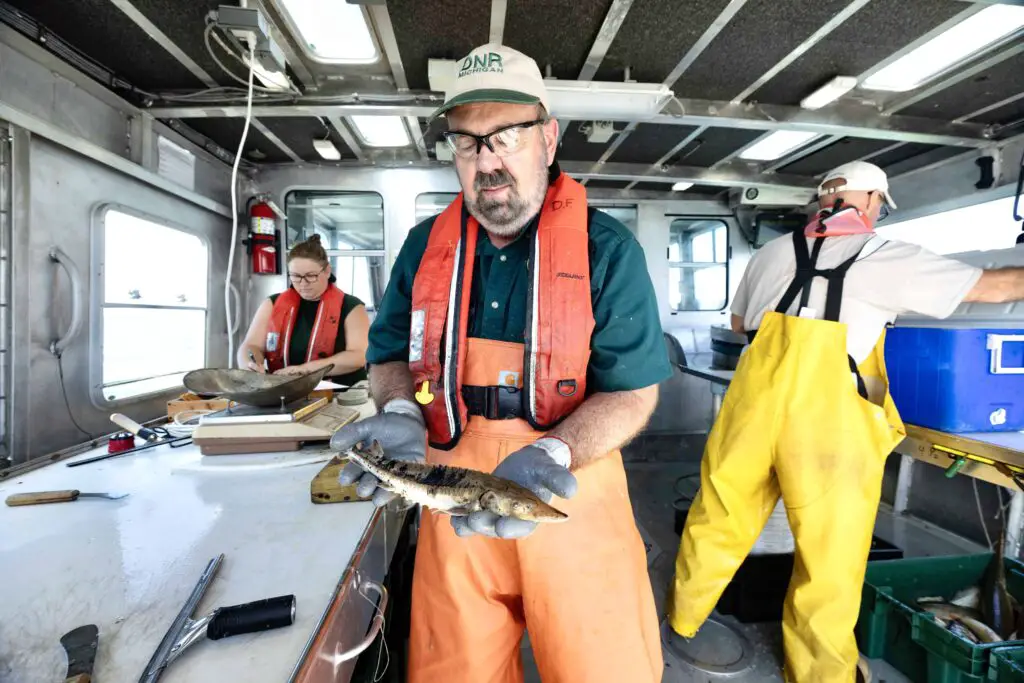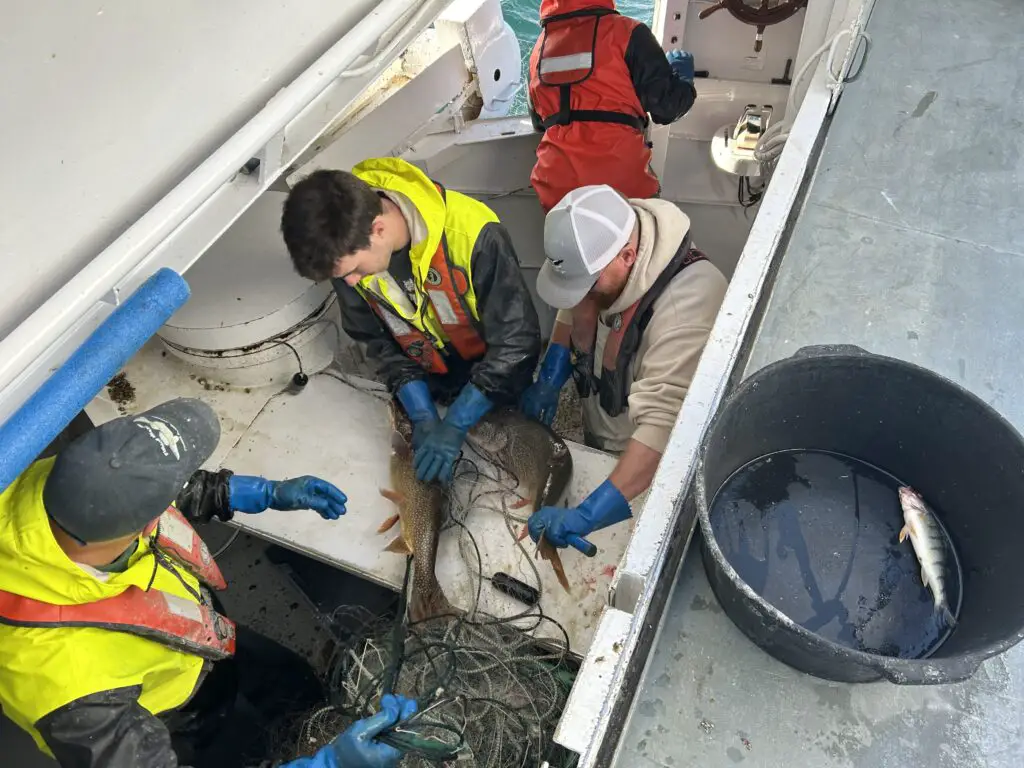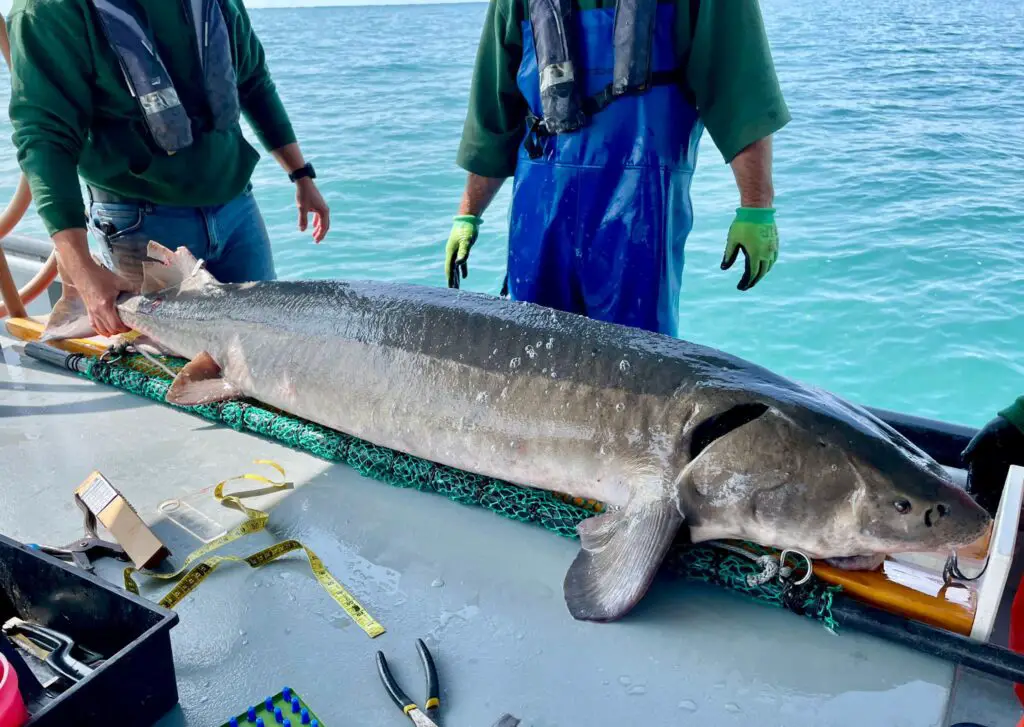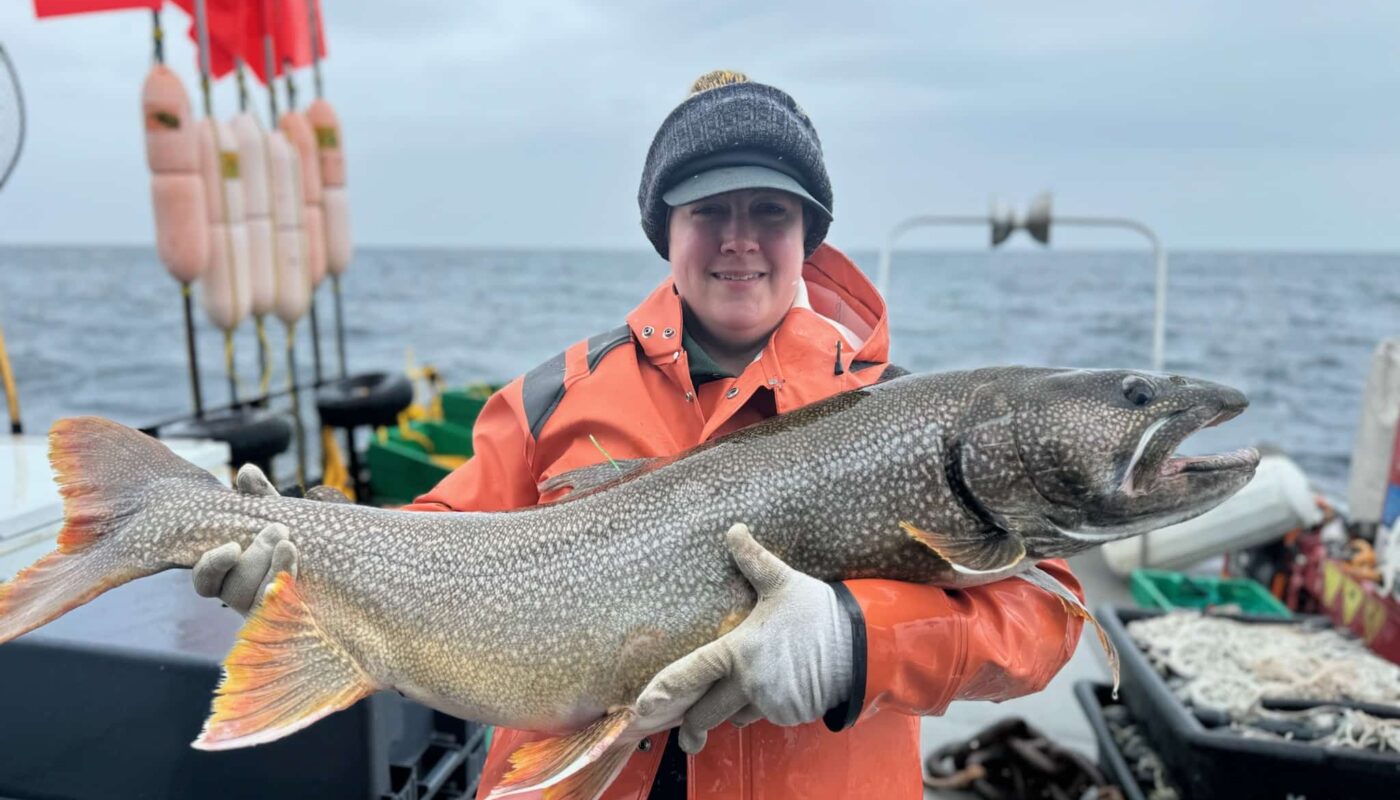Michigan DNR reports stable and recovering Great Lakes fish populations; vital data supports sustainable fisheries management.
Great Lakes Fish Populations See Notable Gains

MARQUETTE, Mich. — The Michigan Department of Natural Resources (DNR) has concluded its 2024 fisheries surveys, highlighting significant trends in Great Lakes fish populations, including gains in lake trout, encouraging cisco restoration progress, and challenges such as invasive species. The surveys from April through November provide essential data to inform decisions on stocking, catch limits, and ecosystem health.
The surveys, led by crews from research stations in Marquette, Charlevoix, Alpena, and Harrison Township, covered all Michigan Great Lakes waters. Key species assessed include walleye, yellow perch, lake trout, and prey like alewife and bloaters.
Lake Superior and Northern Lake Michigan Show Lake Trout Stability
Crews from the Marquette Fisheries Research Station reported generally stable Great Lakes fish populations in Lake Superior, with slight increases in lake trout recruitment in the Keweenaw Peninsula and Munising areas. Gill nets were deployed over 257,100 feet, assessing populations in deep and nearshore waters, including Klondike Reef and Isle Royale.
In Lake Michigan’s Big and Little Bay de Noc, walleye and smallmouth bass populations showed healthy metrics, though invasive Eurasian ruffe remains a concern.
Forage Fish Play Key Role in Lake Michigan’s Ecosystem

The Charlevoix Fisheries Research Station emphasized the importance of forage fish in maintaining predator-prey balance in Lake Michigan. The annual acoustic survey revealed stable alewife densities and increased bloater populations, though young alewife abundance was notably low. These findings inform predator species management, including salmon and trout.
Bottom trawl surveys at multiple ports contributed to assessments of nearshore Great Lakes fish populations, documenting the status of yellow perch and invasive species.
Lake Huron’s Cisco Restoration Efforts Make Headway
The Alpena Fisheries Research Station focused on recovering cisco, a critical species for ecosystem health and fisheries. In Saginaw Bay, a focal point of restoration efforts, Cisco populations showed promising signs. Surveys also documented abundant juvenile walleye, though adult yellow perch numbers remained low.
Juvenile lake sturgeon sightings marked another success for Lake Huron. These observations support ongoing stocking efforts in the Saginaw River system.
St. Clair-Detroit River System Highlights Sturgeon Research

The Harrison Township Fisheries Research Station reported significant findings on lake sturgeon populations in Lake St. Clair. Tagging efforts provided insights into fish movement and habitat use, while surveys confirmed strong recruitment of young sturgeon into the adult population.
Smallmouth bass studies revealed the presence of distinct subpopulations in Lake St. Clair, with limited mixing between well-known areas like Anchor Bay and the Mile Roads.
Yellow Perch Populations Show Mixed Results Across Great Lakes
Yellow perch, a staple of Michigan’s Great Lakes fisheries, exhibited mixed trends in 2024, according to the Michigan Department of Natural Resources (DNR). While some regions reported stable or slightly improving numbers, others highlighted ongoing declines that warrant closer scrutiny.
In Lake Huron, yellow perch populations remain a concern, with both gill net and trawl surveys in Saginaw Bay recording persistently low catch rates for adult perch. Despite these challenges, juvenile walleye numbers in the bay reached the second-highest level on record, which could signal improvements in overall ecosystem conditions that may eventually benefit yellow perch as well.
Meanwhile, Lake Michigan surveys conducted by the Charlevoix Fisheries Research Station provided critical data on nearshore yellow perch communities. These findings will help assess recruitment trends and the impacts of invasive species, such as round goby, which compete with perch for resources. Although exact figures are pending final analysis, preliminary data indicate continued variability in yellow perch numbers across sampled ports.
In Lake St. Clair, yellow perch were among the most commonly captured species in micro-mesh gill net surveys. While this suggests a healthy presence in certain regions, further monitoring is necessary to understand their broader population dynamics and interactions with invasive species.
Overall, yellow perch populations remain under pressure in several areas due to habitat changes, invasive species, and other environmental factors. The DNR’s continued efforts to monitor and manage these populations aim to ensure that this iconic fish remains a vital part of Michigan’s Great Lakes ecosystem and fishing economy.
Broader Context for Great Lakes Fisheries Management
The 2024 surveys highlight both the progress and challenges in managing Great Lakes fish populations. While lake trout and forage fish show promising trends, low young alewife and yellow perch numbers point to areas requiring further focus. These findings guide collaborative management efforts with academic and agency partners across the Great Lakes region.
Find More Interesting Feature Stories From ThumbWind
- Michigan Feature Stories: Unveiling the diverse and vibrant people, captivating places, and remarkable events that make the Great Lake State unique.
- Weird Political News: A sarcastic take on political absurdities across the U.S., providing a humorous perspective on current events.
- Michigan News: Local stories and updates shaping the culture and lifestyle of Michigan’s Upper Thumb region.
Your Turn – Like This, or Loathe It – We Want To Hear From You
Please offer an insightful and thoughtful comment. We review each response. Follow us to have other feature stories fill up your email box, or check us out on Newsbreak at ThumbWind Publications.




